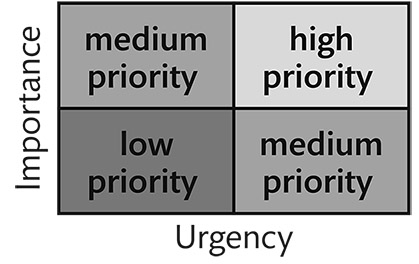Which pathways and management actions produce the desired system outcome?
Resistance, recovery, adaptation and transformation represent pathways to increase resilience or change to a more resilient system. Focus can be given to one component (e.g. prioritising management techniques to increase resistance to an anticipated disturbance such as a pest). However, resilience may also be achieved by identifying appropriate actions for each component and then selecting from them.
It is important to identify, evaluate and prioritise a range of actions. Some actions already being taken may well apply, but there may also be a need to develop new methods, adapt old ones, and consider the collective effect of all the actions being implemented. It is necessary to consider how management plans might be affected by future disturbance events or by changing objectives. A narrow set of actions, or locking the system into one rigid pathway, could be detrimental in the future, even if it appears suitable at present (see the table below).
The management objectives will influence responses to disturbance and the methods chosen for building resilience. For example, if it is vital to maintain the system in a particular state, then methods that emphasise resistance or very rapid recovery might be prioritised. The strengths and weaknesses of different management options and their potential for both desirable and undesirable consequences should also be considered.
Example management actions for Step 4
| Resilience component |
Actions identified in response to the threat of insect pests and diseases by a private forest management company for an upland plantation |
Actions identified in response to the threat of drought by the County Council managing trees in a diversity of settings |
| Potential resistance actions? |
- Clean machines regularly (i.e. biosecurity of harvesting machinery, lorries and excavators)
- Buy-British-first policy when sourcing plants (although some imports needed to meet demand)
- Rhododendron removal (host for Phytophthora ramorum)
|
- Plans and capabilities for watering to combat drought (especially of newly planted trees)
- Vegetation management (e.g. weed control for young trees)
- Site choice for new planting (e.g. use of sustainable drainage systems in urban areas)
|
| Potential recovery actions? |
- Licensing of mills (e.g. to accept infected timber)
- Alternate restocking systems (e.g. use of natural regeneration)
- New rides to improve inspection and harvesting access
|
- Further use of the resistance measures outlined above (e.g. watering and vegetation management), if mortality has yet to occur
- Pruning of street trees
- Coppice management in woodlands
|
| Potential adaptation actions? |
- Alter restocking choices (e.g. no larch planting after P. ramorum)
- Adjust forest design (e.g. thinning to increase airflow and reduce foliar pathogens)
- Continuous cover forestry (site-specific, as a form of diversification)
|
- Planting drought resistant species
- Installation of grey water systems
- Amend local plans to directly reference best practice guidance
- Encourage public engagement in watering schemes
|
| Potential transformation actions? |
- Species change (e.g. trialling the use of Lutz spruce in the east)
|
- Infrastructure planning (e.g. changes to verge width)
- Choose not to replace certain trees
- Shift woodland creation to other less drought prone areas
|
Note: see more examples on the Resilience Implementation Framework – template
Hints and tips for Step 4
- Similar to Step 2, treat this step as a brainstorming exercise on the first attempt. Evaluation of actions, prioritisation, consideration of trade-offs and synergies etc. can take place later.
- Depending on your focus you might find it useful to look at toolkits and guidance available elsewhere such as the UK Forestry Standard (UKFS) or the Woodland Star Rating self-assessment scheme. Further resources are also available at the end of this framework.
- Categorising actions as part of resistance, recovery, or adaptation pathways is useful for understanding timescales and for identifying complementary actions that ensure resilience is fully considered. However, actions do not always clearly belong to one pathway or another. If one is causing difficulty, consider making a holding decision and a note to come back to it later. You may eventually decide that the same action belongs in more than one pathway.
- The pathway under which certain actions are listed may change depending on how you identify the system in Step 1.
- Once completed you may want to prioritise actions (see box below), search for recurring actions and synergies, and develop an implementation plan. This could also take into consideration potential trade-offs and conflicts/unintended consequences of potential actions.
How to prioritise actions
Step 4 may result in a long list of possible actions. The best way to deal with this is to evaluate, prioritise and assign each task to the relevant person or team. There are several ways of approaching this and different teams may find that one method works better than another. Once you have created a list of possible actions, here are two possible methods to prioritise them:
The breakdown
- Identify the short and long term goals.
- Breakdown the tasks required to achieve the goals into actions.
- Categorise each action into a time frame (e.g. this year, next month, this week).
- Assign the actions to the relevant person or team
The matrix
Create a table 2 x 2, with Importance on the y-axis and Urgency on the x-axis as shown below. Assign each action to an area on the table based on how urgent and important each is. Thus, highly important and urgent actions would appear in the top right corner. Assign a deadline based on the priority.
The time frame will differ between actions and goals as your system may work on a 5-year or 25-year cycle. |

